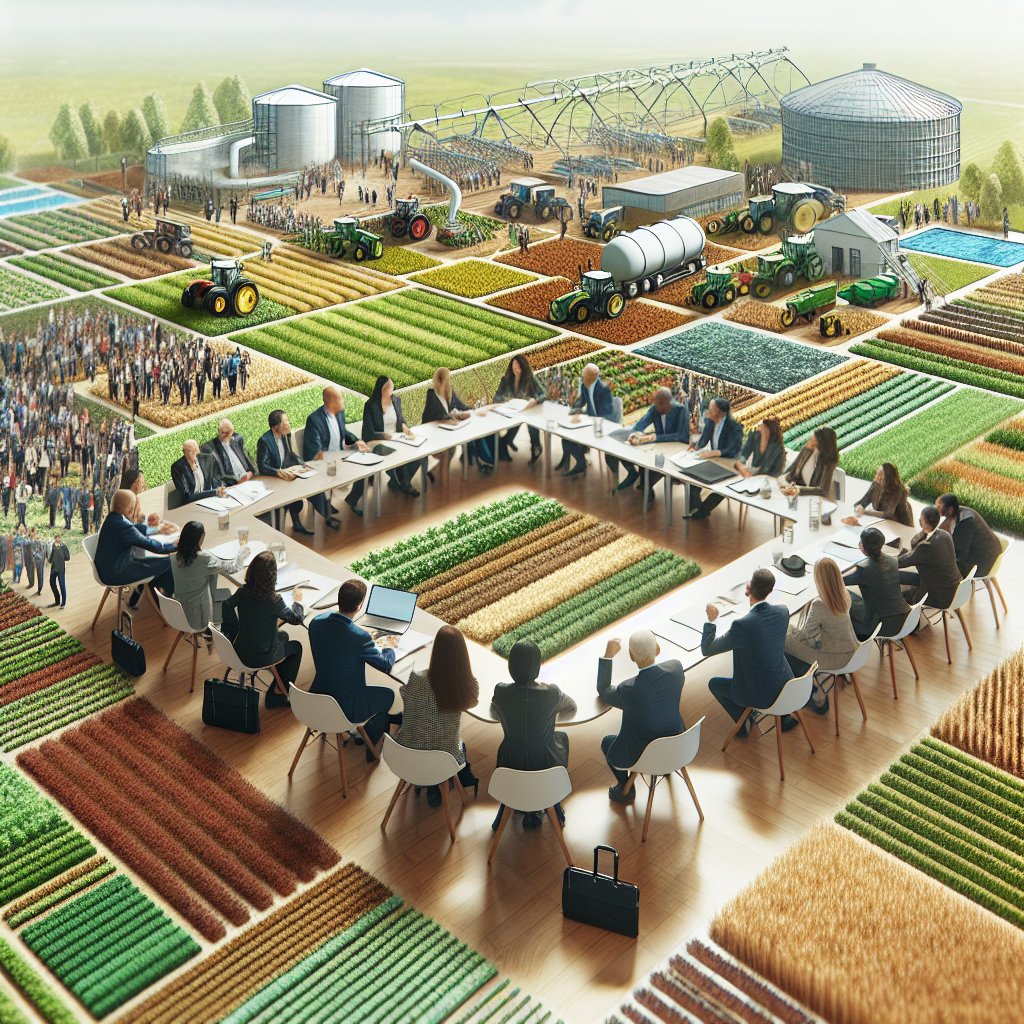Agroforestry is transforming landscapes across the globe by integrating trees and shrubs into agricultural systems, creating a sustainable approach to farming that benefits both the environment and local communities. This innovative practice not only enhances biodiversity but also improves soil health, increases crop yields, and provides additional sources of income for farmers. As the world faces challenges such as climate change, deforestation, and food insecurity, agroforestry emerges as a viable solution that harmonizes agricultural productivity with ecological preservation.
The Principles of Agroforestry
Agroforestry is based on the principle of combining agricultural crops with trees and shrubs in a way that maximizes the benefits of both systems. This integration can take various forms, including alley cropping, silvopasture, forest farming, and windbreaks. Each method has its unique advantages and can be tailored to specific environmental conditions and community needs.
Alley Cropping
Alley cropping involves planting rows of trees or shrubs alongside crops. This method provides shade, reduces soil erosion, and enhances soil fertility through the addition of organic matter from fallen leaves and branches. The trees can also serve as windbreaks, protecting crops from harsh weather conditions. Farmers can harvest timber or fruit from the trees, creating an additional income stream.
Silvopasture
Silvopasture combines forestry and livestock grazing. By allowing animals to graze under a canopy of trees, farmers can improve animal welfare while simultaneously benefiting from the trees’ shade and forage. This system promotes biodiversity and can lead to healthier pastures, as the trees contribute to soil health and water retention.
Forest Farming
Forest farming involves cultivating high-value crops under the protection of a forest canopy. This method is particularly beneficial for growing medicinal herbs, mushrooms, and other specialty crops that thrive in shaded environments. By utilizing existing forest resources, farmers can diversify their income while conserving forest ecosystems.
Windbreaks
Windbreaks are rows of trees planted to protect crops from wind and reduce soil erosion. They can also enhance pollination and provide habitat for wildlife. By strategically placing windbreaks, farmers can improve crop yields and create a more resilient agricultural landscape.
Environmental Benefits of Agroforestry
The environmental benefits of agroforestry are profound and multifaceted. By integrating trees into agricultural landscapes, farmers can combat climate change, enhance biodiversity, and improve soil and water quality.
Climate Change Mitigation
Agroforestry plays a crucial role in mitigating climate change by sequestering carbon dioxide from the atmosphere. Trees absorb CO2 during photosynthesis, storing carbon in their biomass and the soil. This process not only helps reduce greenhouse gas concentrations but also enhances the resilience of agricultural systems to climate-related stresses.
Biodiversity Enhancement
Agroforestry systems support a diverse range of plant and animal species. The presence of trees and shrubs creates habitats for wildlife, promoting biodiversity in agricultural landscapes. This diversity can lead to improved pest control, pollination, and overall ecosystem health, reducing the need for chemical inputs and enhancing food security.
Soil Health Improvement
Integrating trees into farming systems improves soil health by enhancing nutrient cycling, increasing organic matter, and reducing erosion. Tree roots help stabilize the soil, while leaf litter adds nutrients as it decomposes. Healthy soils are essential for sustainable agriculture, as they support crop growth and resilience against pests and diseases.
Water Conservation
Agroforestry practices can significantly improve water management in agricultural landscapes. Trees help retain moisture in the soil, reduce runoff, and enhance groundwater recharge. By promoting better water retention, agroforestry systems can mitigate the impacts of drought and improve the overall resilience of farming systems.
Socioeconomic Impacts of Agroforestry
Beyond environmental benefits, agroforestry has significant socioeconomic impacts that can enhance the livelihoods of farmers and rural communities. By diversifying income sources and improving food security, agroforestry contributes to sustainable development and poverty alleviation.
Diversification of Income
Agroforestry allows farmers to diversify their income by producing multiple products from the same land. In addition to traditional crops, farmers can harvest timber, fruits, nuts, and medicinal plants. This diversification reduces economic risk and provides a buffer against market fluctuations, ensuring a more stable income for families.
Food Security
By improving soil health and increasing crop yields, agroforestry contributes to food security in rural communities. The integration of trees can enhance the nutritional quality of food produced, as many agroforestry systems include fruit and nut-bearing species. This increased availability of diverse food sources can help combat malnutrition and improve overall community health.
Community Resilience
Agroforestry fosters community resilience by promoting sustainable land management practices and enhancing local economies. As farmers adopt agroforestry techniques, they often collaborate with neighbors, sharing knowledge and resources. This sense of community can strengthen social ties and create a supportive network for sustainable development.
Empowerment of Women and Marginalized Groups
Agroforestry can empower women and marginalized groups by providing them with opportunities to participate in agricultural production and decision-making. Many agroforestry practices are labor-intensive and can create jobs for women, who often play a crucial role in food production. By involving these groups in agroforestry initiatives, communities can promote gender equality and social inclusion.
Challenges and Future Directions
Despite its numerous benefits, agroforestry faces several challenges that must be addressed to maximize its potential. These challenges include land tenure issues, lack of access to resources, and the need for education and training.
Land Tenure Issues
In many regions, unclear land tenure rights can hinder the adoption of agroforestry practices. Farmers may be reluctant to invest in long-term projects if they do not have secure ownership of the land. Addressing land tenure issues through policy reforms and community engagement is essential for promoting agroforestry.
Access to Resources
Farmers often lack access to the necessary resources, such as seeds, tools, and financial support, to implement agroforestry practices. Governments and NGOs can play a vital role in providing training, resources, and financial assistance to help farmers transition to agroforestry systems.
Education and Training
Education and training are crucial for the successful implementation of agroforestry. Farmers need to understand the principles and practices of agroforestry to effectively integrate trees into their farming systems. Extension services and community-based training programs can help disseminate knowledge and build capacity among farmers.
Research and Innovation
Continued research and innovation are necessary to develop new agroforestry practices and improve existing ones. Collaborative efforts between researchers, farmers, and policymakers can lead to the development of context-specific solutions that address local challenges and enhance the sustainability of agroforestry systems.
Conclusion
Agroforestry is a transformative approach to agriculture that offers numerous environmental, social, and economic benefits. By integrating trees into farming systems, agroforestry enhances biodiversity, improves soil health, and contributes to climate change mitigation. Furthermore, it provides farmers with diversified income sources and promotes food security in rural communities. While challenges remain, the future of agroforestry looks promising, with the potential to create resilient agricultural landscapes that benefit both people and the planet. As we move forward, it is essential to support the adoption of agroforestry practices through education, research, and policy reforms, ensuring a sustainable and equitable future for global agriculture.



